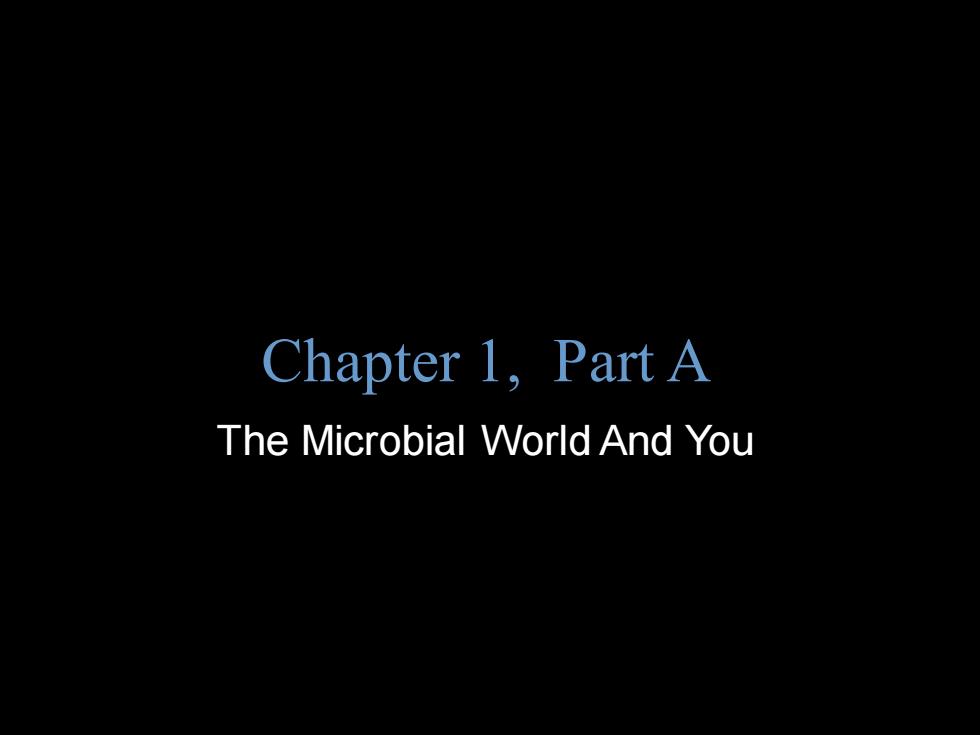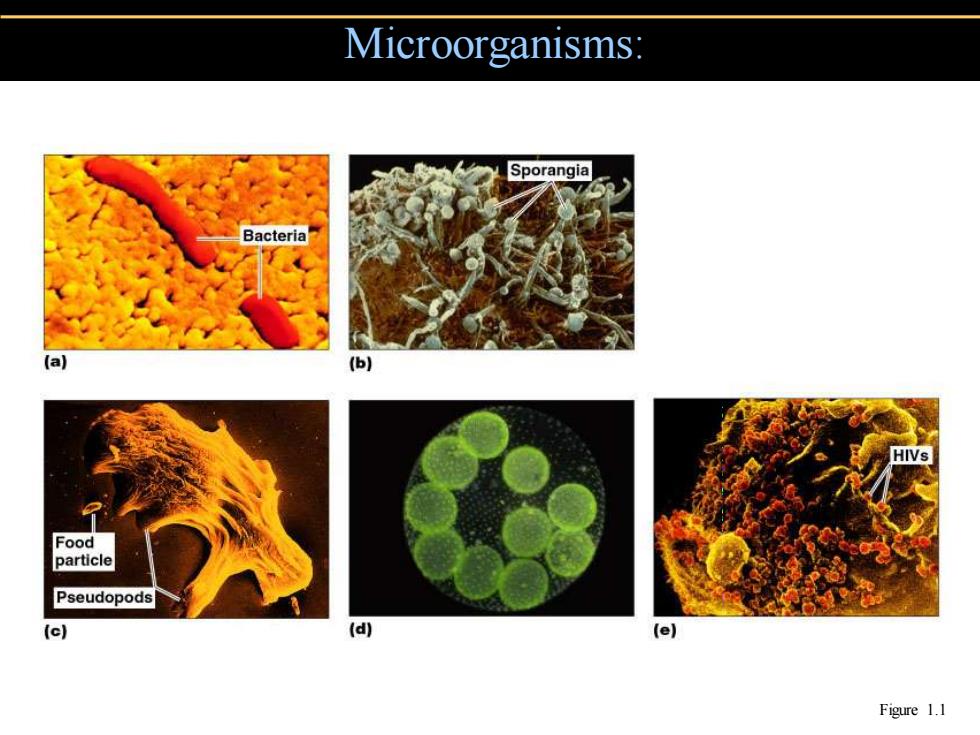
Chapter 1,Part A The Microbial World And You
Copyright © 2004 Pearson Education, Inc., publishing as Benjamin Cummings B.E Pruitt & Jane J. Stein Chapter 1, Part A The Microbial World And You

Microbes in Our Lives 。 Microorganisms are organisms that are too small to be seen with the unaided eye. ·“Germ”refers to a rapidly growing cell
Microbes in Our Lives • Microorganisms are organisms that are too small to be seen with the unaided eye. • “Germ” refers to a rapidly growing cell

Microorganisms: Decompose organic waste Are producers in the ecosystem by photosynthesis Produce industrial chemicals such as ethyl alcohol and acetone Produce fermented foods such as vinegar,cheese, and bread
• Decompose organic waste • Are producers in the ecosystem by photosynthesis • Produce industrial chemicals such as ethyl alcohol and acetone • Produce fermented foods such as vinegar, cheese, and bread Microorganisms:

Microorganisms: Sporangia Bacteria (b) HIVs Food particle Pseudopods (e) d (e】 Figure 1.1
Microorganisms: Figure 1.1

Microorganisms: Produce products used in manufacturing (e.g., cellulase)and treatment (e.g.,insulin) A few are pathogenic,disease-causing
• Produce products used in manufacturing (e.g., cellulase) and treatment (e.g., insulin) • A few are pathogenic, disease-causing Microorganisms:

Knowledge of microorganisms: 。Allows humans to Prevent food spoilage Prevent disease occurrence Led to aseptic techniques to prevent contamination in medicine and in microbiology laboratories
• Allows humans to • Prevent food spoilage • Prevent disease occurrence • Led to aseptic techniques to prevent contamination in medicine and in microbiology laboratories. Knowledge of microorganisms:

Naming and Classifying Microorganisms Linnaeus established the system of scientific nomenclature. Each organism has two names:the genus and specific epithet
Naming and Classifying Microorganisms • Linnaeus established the system of scientific nomenclature. • Each organism has two names: the genus and specific epithet

Scientific names Are italicized or underlined.The genus is capitalized and the specific epithet is lower case. ·Are“Latinized"and used worldwide. May be descriptive or honor a scientist
• Are italicized or underlined. The genus is capitalized and the specific epithet is lower case. • Are “Latinized” and used worldwide. • May be descriptive or honor a scientist. Scientific names

Scientific names Staphylococcus aureus Describes the clustered arrangement of the cells (staphylo-)and the golden color of the colonies
• Staphylococcus aureus • Describes the clustered arrangement of the cells (staphylo-) and the golden color of the colonies. Scientific names

Scientific names 。Escherichia coli Honors the discoverer,Theodor Eshcerich,and describes the bacterium's habitat,the large intestine or colon
• Escherichia coli • Honors the discoverer, Theodor Eshcerich, and describes the bacterium’s habitat, the large intestine or colon. Scientific names